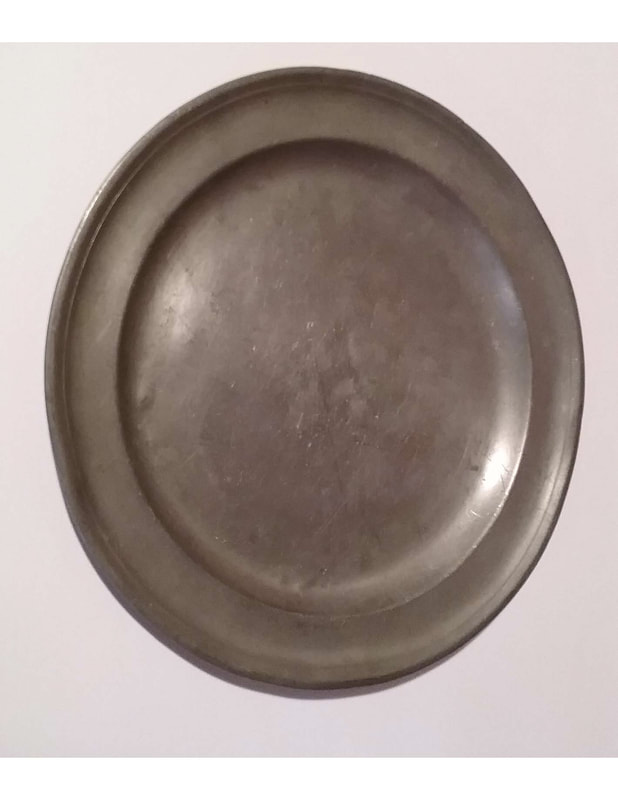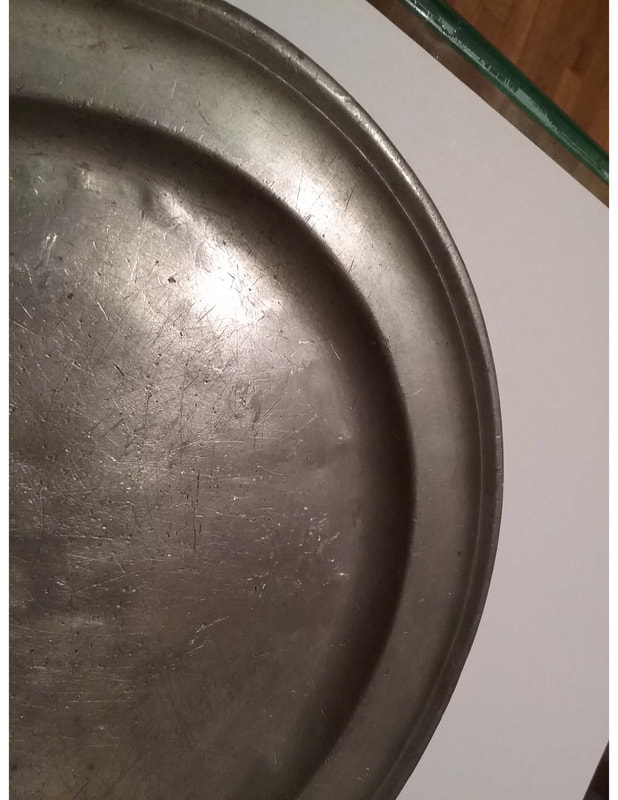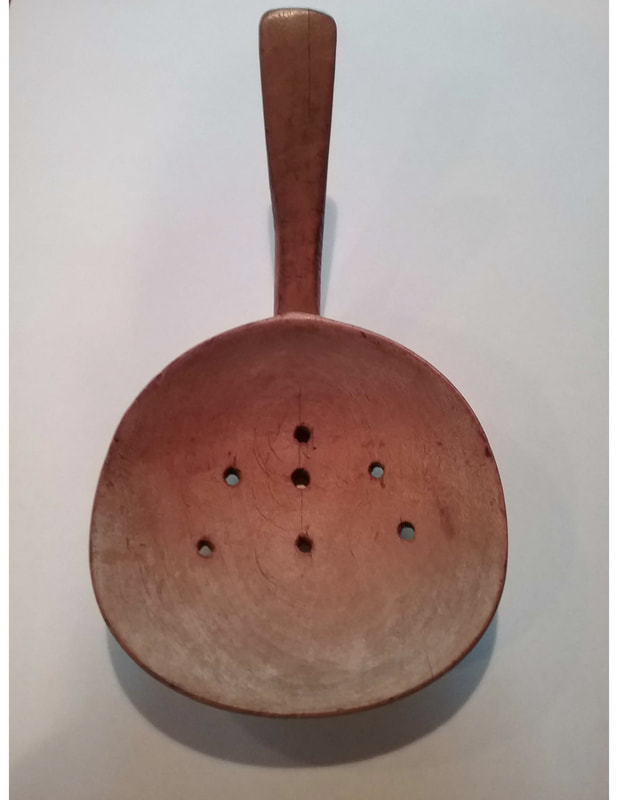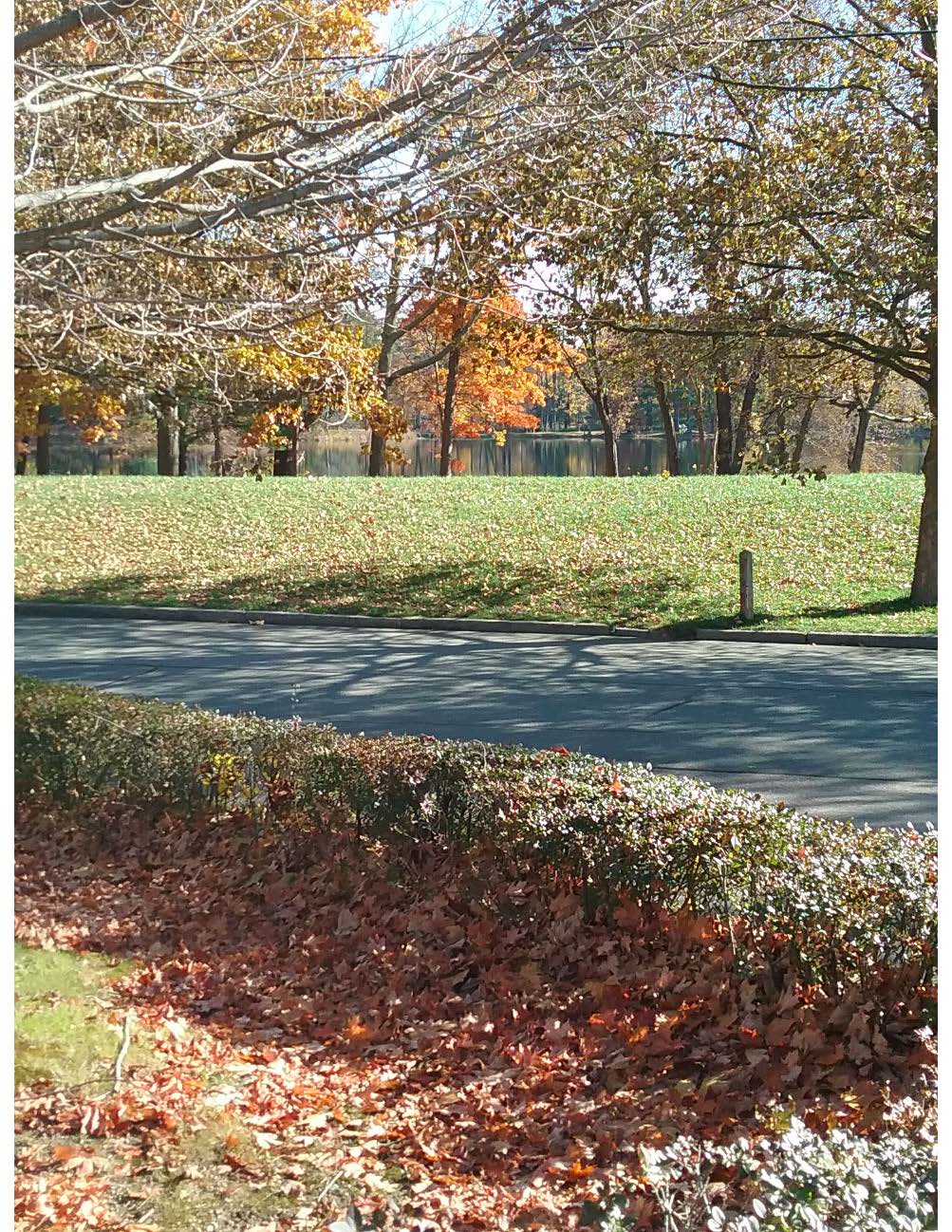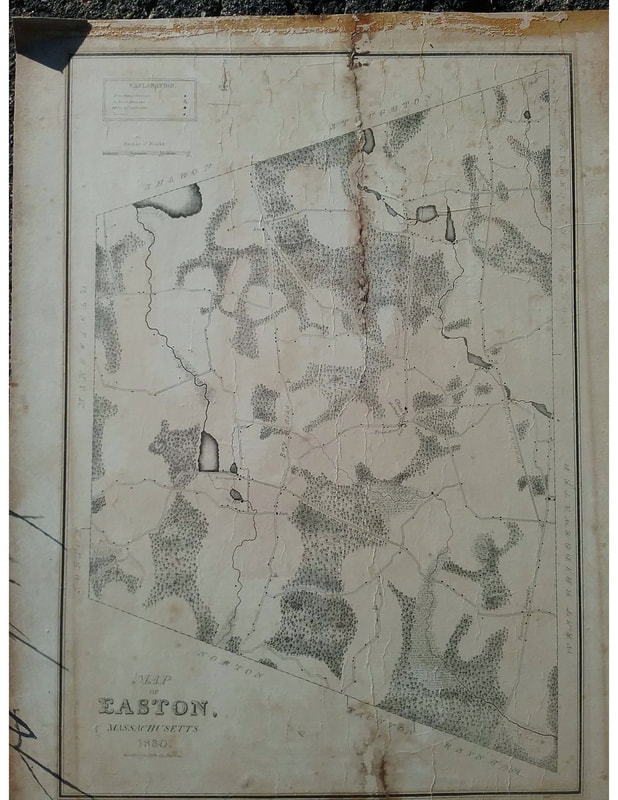|
Hello! It is hard to believe that just one year ago we were in the midst of a very busy weekend! We had a great Black Friday sale all weekend thanks to Jonathan Coe, whose retail expertise (and great book of Easton photos) got us off to a roaring start for the holidays. We saw a lot of people, had a lot of fun, and raised a lot of important funds for the Society and Museum. This year is the complete opposite! But there is good news too. The Museum will be open weekdays and Saturdays to help meet your shopping needs. Masks and social distancing are required! You can shop online - there is an option for curbside pickup - or you can drop by the Museum to shop for unique Easton gifts for someone special. Beginning early next week I'll be sharing specials that you can take advantage of. Watch your email or our social media for details!
Many of us use special dishes and place settings for our holiday meals. Did you have your best china out for Thursday? Or are you planning to set a festive table for Christmas or Hanukkah? We often have that special item that has been passed down in the family from generation to generation. Today's artifact is one of those very special items. When Reuben Harlow married Hannah Fuller in Easton in 1791, she brought a special piece from her family. It is a pewter dinner plate. Attached is a photo of the plate, and a detail of the plate's rim. Measuring just about 8 1/2" in diameter, it would have been a prized possession for her. As a matter of fact, her initials are stamped on the reverse, probably by the manufacturer. Unfortunately, there are no other discernible marks in the plate to identify the manufacturer. But as the plate is stamped "HF" for Hannah Fuller rather than "HH" for her married name, she must have been given the plate prior to her marriage. Hannah was born around 1770/1 in Sharon, Massachusetts to Lemuel and Ruth (Tisdale) Fuller. She married Reuben Harlow (1773-1823) in 1791 and was in Easton at that time. Reuben was a direct descendant of Sgt. William Harlow of Plymouth, MA. and the Harlow Old Fort House. Hannah died in 1850, outliving her husband by 27 years. They had four children including Tisdale, who was born in 1804. He died in 1883, and built the farmhouse at 131 Poquanticut Avenue. An 1825 map lists Hannah Fuller at that location, and the current house may have replaced an older home originally built for Reuben and Hannah. The Tisdale name continues in the family for generations. The Tisdale Harlow I knew growing up (he was our "backyard neighbor" on South Street) was the grandson of the Tisdale who built the old farmhouse. The Harlow family kept this plate in the family until 2012 when direct descendant Earl Nichols presented it to us. Earl and his family attended the annual Harlow Family Reunion in Plymouth for years. Earl grew up on Center Street, and moved to Pennsylvania many years ago. The family always visited Easton when they returned for the reunion each year. I met him several times at the Museum. He wanted to see the plate "back in Easton" where it belonged. We are honored to have such a cherished heirloom in our collection. Stay well, and watch your email for exciting updates! Frank
0 Comments
Hello all, Attached is the winter newsletter. Hard copies are in the mail! Watch for a special announcement in a few days about how we can help you with your holiday shopping! Wishing you a Happy Thanksgiving, Frank -- Frank T. Meninno Curator, Easton Historical Society and Museum 508-238-7774
Hello, and a Happy Thanksgiving to all! All of a sudden the holiday season is upon us, one that will be very different than so many past seasons. Still, in a year full of challenges, we look forward to this season of hope and joy.
I call your attention to a flyer from our friends at the Easton Garden Club, which is attached. This year, due to all of the restrictions, we will host the Easton Garden Club's Annual Greens Sale a little differently. It will be held on Saturday, December 5, from 9 a.m. to noon. All of the events will be outside, and our building will be closed for that morning. If you look at the flyer, you will see that wreaths can be pre-ordered. There will be very limited browsing due to the need to socially distance, so you are strongly encouraged to pre-order and take advantage of curbside pickup that morning. Of course, masks will also be required. You can check out the Easton Garden Club website at https://www.eastongardenclub.org/about-us or their Facebook page at https://www.facebook.com/EastonGardenClub for up-to-date details and information. We are getting our plans together for December as well, and next week, we will announce some specials to help you with your gift-giving needs! Stay tuned! Just in time for cooking that Thanksgiving meal, today's historical item is one you will be familiar with. Attached is a photo of a skimmer, a spoon with holes to allow for straining liquids. According to legend, it was made "before the incorporation of the Town" (that is, before 1725) by a fellow named "Old Bunn." "Old Bunn" is a nickname of one Benjamin Eddy who is referenced in Chaffin's History of Easton. According to Chaffin, "Old Bunn" went by a number of aliases during this time here. He appears to be of French and Native American descent and came down from Canada around the time of the French and Indian wars. He was a skilled woodcarver, who tried to earn a living by helping out local farmers, working for food and board. At times he would carve a useful item to help out the housewives. Our skimmer was made by him and passed down through the Williams family by Mary Williams who lived on Bay Road and was a longtime school teacher. She was related by marriage to the Keith family as well, and between the two families, had several farms and taverns along the stretch of Bay Road near the Wheaton Farm area. It is possible that this utensil was made for use by one of those early settlers. One could use the skimmer for several reasons: skimming the cream off of milk; skimming the fat off of stews (that could be used later to make soap); or, as we like to tell the second graders when they visit, may have been useful to remove flies, etc. from the stewpot that was simmering out in the open air! One can imagine a number of uses, I am sure. Unfortunately, woodcarving was not in itself enough support, and by the 1760's "Old Bunn" and his family turned to thieving to supplement their income. Even the kids were involved! He had such a reputation for this that, at one time after being charged for something he actually did not steal, he stated that "people are stealing on my good credit." Eddy lived in a number of abandoned homes in and around Easton and Raynham for some years, being chased from neighborhood to neighborhood. He disappeared from the record in the late 1780's. If this skimmer is as old as the legend says, he must have been a young man when he made it. Probably the date is a little later, and Eddy made this sometime after his arrival to town. Up in the woods near the Easton / Mansfield line, not far from where Walnut Street once ran through the woods, is the remains of a former Eddy farm, dating to the 1800's. I walked it many times. One wonders if perhaps a child or grandchild eventually settled down and found some peace. Still this was a pretty secluded place in those days, and maybe was just the right place to settle down, away from people and the reputation left by forebears. I hope you all have a good Thanksgiving, and until next week, stay well. Frank Greetings from a very cool morning in Easton! Frost on the truck windshield was a reminder that we are indeed approaching the end of November. That also brings to mind the upcoming holiday celebrations. It comes as no surprise that things are very different this year. There will be no downtown celebration, but the Rockery will still be decorated and lit for the holidays. There will be no parade this year, no Reindog parade either. As I drive around town after dark, I have already seen a few Christmas trees up in people's houses, candles in windows, and even a few Christmas lights out. In a year when we put so much on hold, I think everyone is holding on to the traditions of their families to get a little hope and joy out of an otherwise dismal time.
Good news though! We will be hosting the Easton Garden Club for their annual Holiday greens sale on Saturday, December 5 from 9 a.m. to noon. Details are still being worked out, but everyone is encouraging pre-orders and curbside pickup. I'll have more information next week. Watch our social media and the Easton Garden Club's website for more up to date announcements and details ( https://www.eastongardenclub.org/happenings ). Each week I will be featuring something from our collections that I hope you will find interesting. Today, we will look at one of our earliest Colonial period pieces. Easton has a very diverse geography. The northern part of town is very rocky, hilly, and is full of hard volcanic rock. The southern part of town features nice loam and sand, and is relatively flat. The southeast corner of town is very wet, compliments of an ancient inland sea whose remnant is the Hockomock Swamp. This left behind soil filled with a high iron content, and also left behind a good quality clay. A wide vein of clay runs through South Easton all the way to Furnace Village, at times several feet thick. This clay, once discovered, led to a small brick making industry in the early to mid-1700's. Two places in particular were noted as brickyards by William Chaffin in his History of Easton. In 1886, when he was writing, the last vestiges of the former brickworks could still be seen. On Turnpike Street, in the area now occupied by the Easton Mobile Home Park, a brick manufacturing business was carried on in the early days of the town. A 1756 map places a Kinsley family at the site, and an 1825 map shows the property owned by members of the Drake family. Either family, or perhaps both families, made bricks on a small scale. A better known brickyard was run for many years by James Dean, who operated his business in and around the site of the current Pine Oaks Golf Club. A careful look into the woods around there will show disturbed ground where clay had been removed to make bricks, and it appears that Dean had a much more significant business going by 1754. Chaffin mentions bills in his possession for the sale of bricks at that time. Unfortunately, Chaffin does not record what he saw in the 1880's when he was researching Easton's history, and I am not sure the bills have survived. In the early days bricks were left to bake and harden in the hot sun, the same way they were made thousands of years ago. Perhaps Dean may have built a small kiln to bake bricks and make "other" clay items. If you have one of the really old houses in Easton, there is a good chance that the bricks in your chimney or beehive oven were made by one of these two people. It is the "other" clay item that we will take a quick look at today. Attached is a photo of a "juglet" or small clay jug found in Easton many years ago. It was found near the end of Center Street, north of the intersection of Depot Street. The jug measures 5" high and is 3 1/2" in diameter, with a 3/4" diameter mouth. A small handle on one side allows for pouring. A close look at the structure reveals that it was thrown on a potter's wheel as opposed to being made from a mold. This type of pottery is called "redware" and the clay gets its color from the iron content when it is fired. A glaze made from lead oxide (led ore is also found in Easton) and sand was applied after firing, and the whole piece is vitrified to hold liquid without leaking. A small jug like this one may have once held oil, vinegar, molasses, or some other small quantity of precious liquid. Jugs like this had been made the same way since Roman times. There is no mark on the jug to identify a maker, which leads me to believe that it was locally made right here in Easton. The 1756 map shows a home in the area where the jug was found owned by Benjamin Drake, one of several living in Easton during that time by that name. I can attest to the quality and quantity of the clay in Easton. As a young boy, digging in our yard on Foundry Street, we would hit a band of clay about two feet thick less than two feet under the surface. And as a young golfer, when playing Pine Oaks on the hot summer day, I always got a few extra yards out of my drives thanks to some bounces off of the very hard clay filled soil there. Stay well, and until next week, Frank Good morning, good afternoon, or good evening! Please choose whichever salutation applies to you! When I wrote last week the ground was covered with up to 5" of snow. Today temps will exceed 70 degrees, as they have for the last two days and probably will for the next several days as well. Brilliant sunshine and a perfectly still Shovel Shop Pond make for a lovely scene this morning! I've attached an image below for you to enjoy.
|
Author
Anne Wooster Drury Archives
June 2024
Categories |
||||||
Easton Historical Society and Museum
PO Box 3
80 Mechanic Street
North Easton, MA 02356
Tel: 508-238-7774
[email protected]

